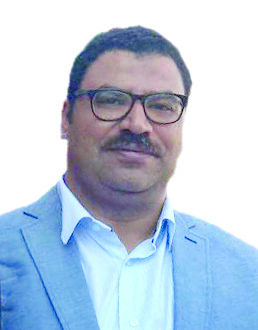Last week, Egypt witnessed a historic launch and the successful deployment of remote sensing MisrSat-2 satellite, which was assembled and tested in Egypt, from the Taiyuan Satellite Launch Centre in China’s Taiyuan. This remarkable achievement is the culmination of scientific collaboration between Egypt and China, signifying a new era of co-operation and innovation.
MisrSat-2 is a cutting-edge Earth observation satellite equipped with advanced imaging capabilities. It will provide invaluable data for various applications, including agricultural monitoring, urban planning, natural resource management and disaster response. Hence, it serves Egypt’s sustainable development goals by utilising space technology to enhance vital areas, including agriculture and exploration of mineral resources.
The satellite was built using China’s $92 million grant in February 2022. With Chinese co-operation, it was assembled and tested at EgSA’s Satellite Assembly, Integration, and Testing Centre (AITC), the agency said.
The launch of MisrSat-2 is not simply a technological feat. Rather, it represents a significant step forward in Egypt’s Vision for Innovation and Scientific Research 2030. This ambitious vision aims to position Egypt as a regional leader in scientific research and development, and the collaboration with China serves as a catalyst for achieving this goal.
Moreover, the successful launch of MisrSat-2 coincides with China’s recently launched International Science and Technology Co-operation Initiative. This initiative aims to foster international collaboration on a global scale, addressing pressing global challenges and promoting shared prosperity. It aligns perfectly with the principles of mutual respect, fairness, equality, and non-discrimination, encouraging all countries and research entities to participate on an equal footing.
The MisrSat-2 project serves as an exemplary case study of the benefits of international scientific collaboration. It demonstrates how countries can leverage their respective strengths and expertise to achieve ambitious goals and contribute to global progress. This collaboration also highlights the importance of initiatives like the International Science and Technology Co-operation Initiative, which provides a framework for promoting collaborative research and addressing shared challenges.
China for the first time proposed an international science and technology co-operation initiative at the Belt and Road Conference on Science and Technology Exchange in southwest China’s Chongqing Municipality last month.
The initiative urges the improvement of global science and technology governance, the strengthening of intellectual property rights protection, as well as global collaboration on technological innovation, and the building of a global innovation network.
Looking ahead, the launch of MisrSat-2 marks a new chapter in the scientific partnership between Egypt and China. This collaboration is poised to flourish under the umbrella of the International Science and Technology Co-operation Initiative, paving the way for further breakthroughs and advancements in the years to come.
Further collaborations between Egypt and China, as well as collaborations among other nations, hold immense potential for driving progress in various fields, contributing to a more sustainable and prosperous future for all. As the world grapples with complex challenges, international scientific co-operation will be more crucial than ever before. Initiatives like the International Science and Technology Co-operation Initiative can act as a catalyst for global collaboration, empowering nations to address shared challenges and build a brighter future for all.






Discussion about this post